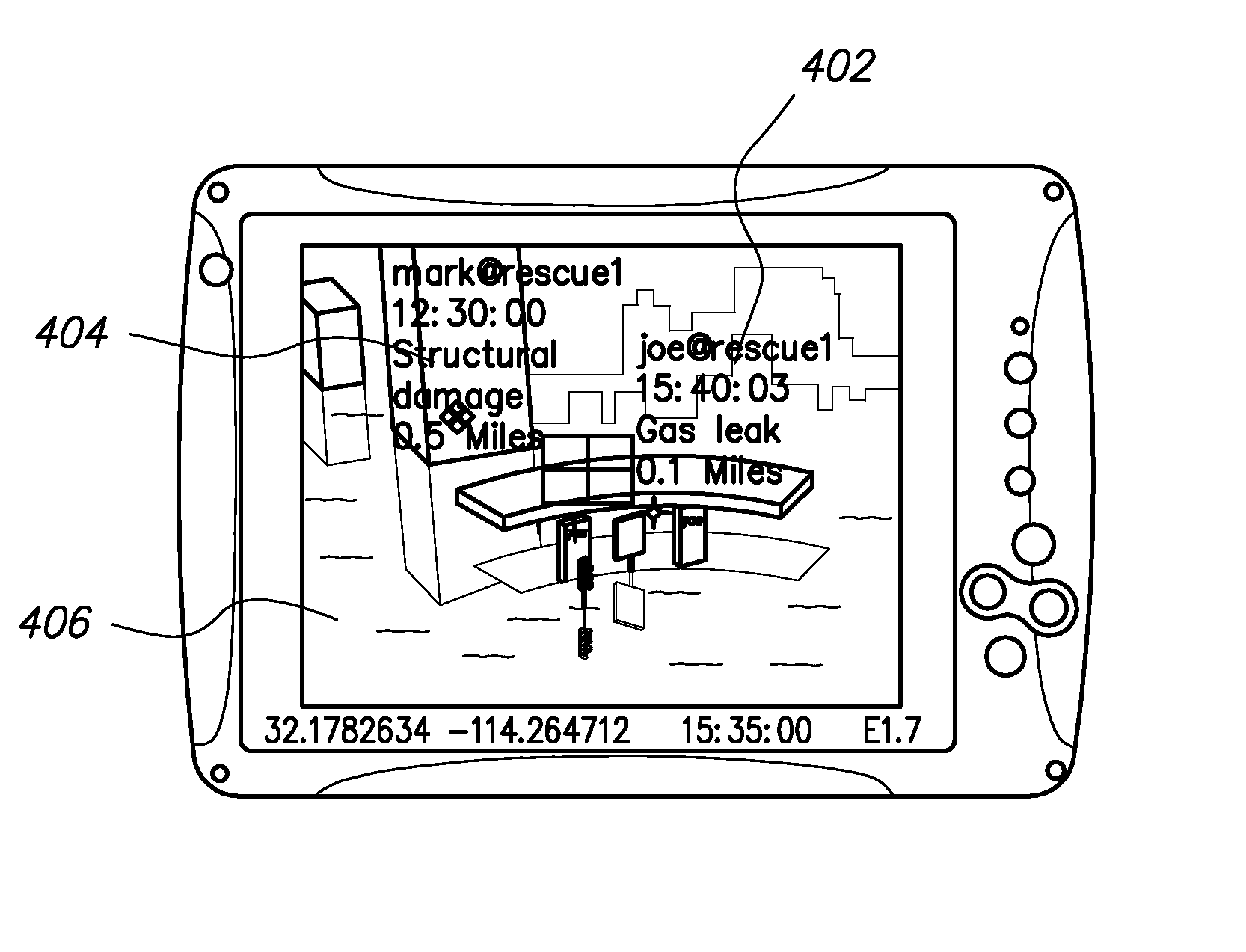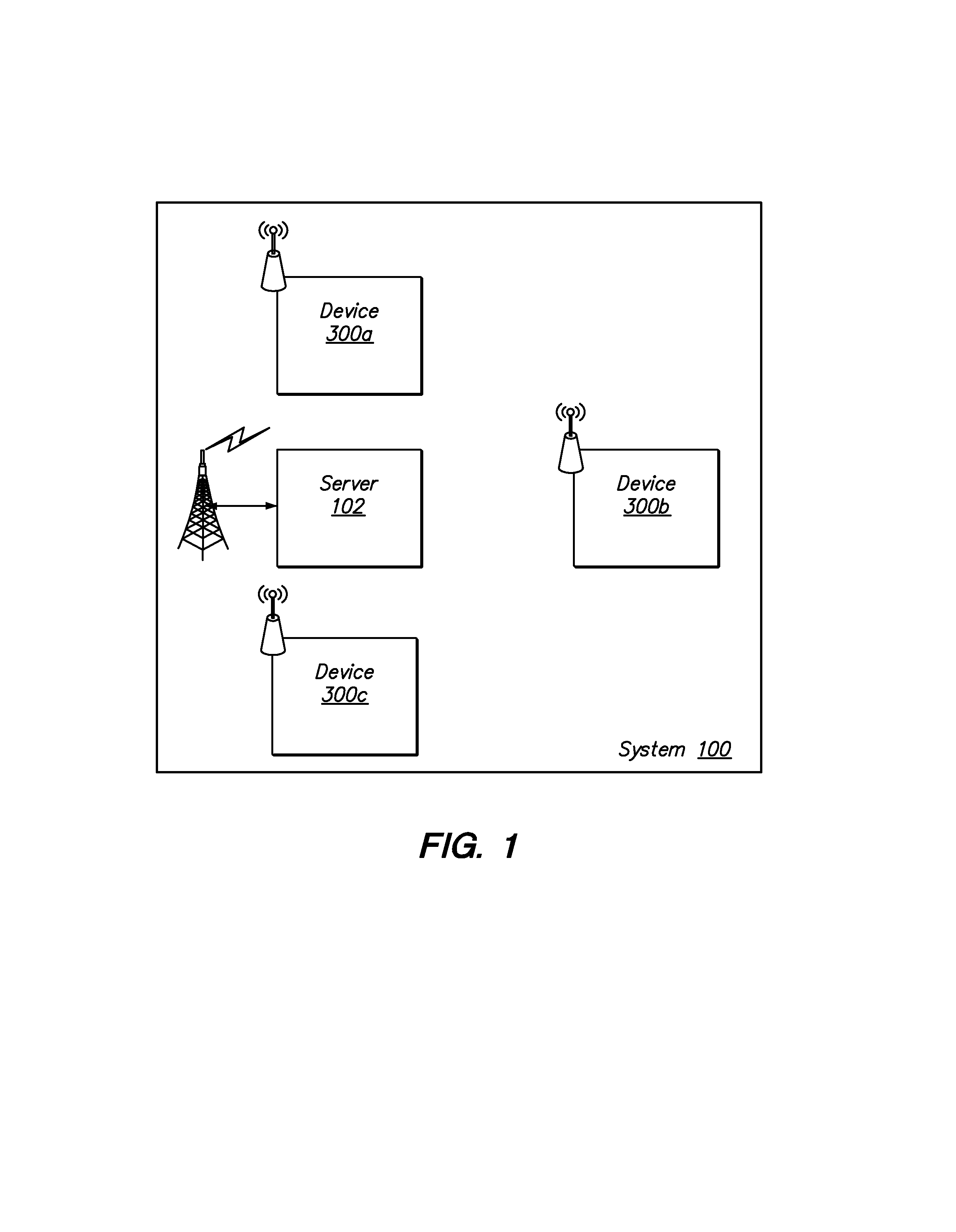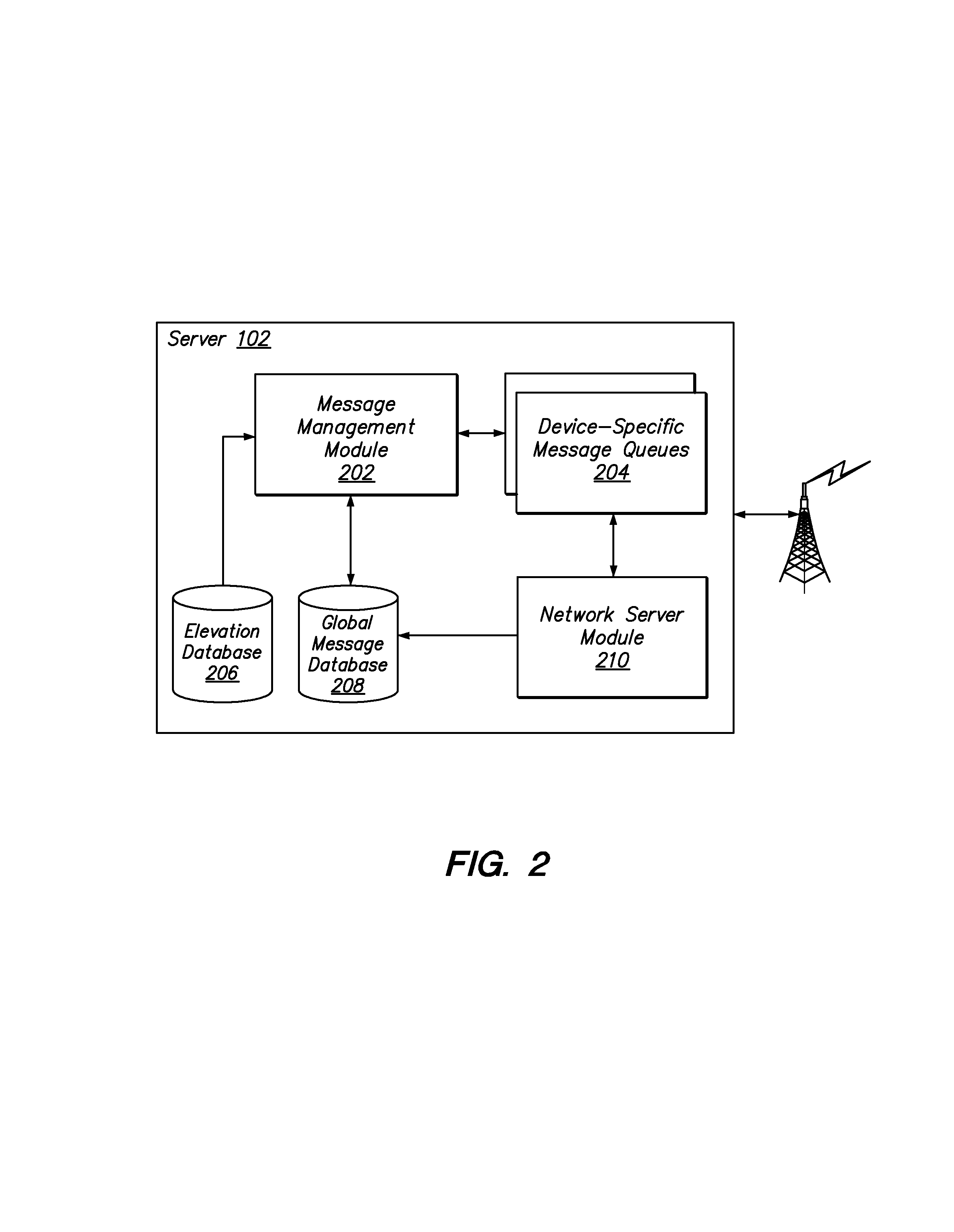Location based wireless collaborative environment with a visual user interface
a collaborative environment and wireless technology, applied in the field of computer graphics and networked wireless communication, can solve the problems of inability to integrate with what is happening on the field and where, tools that work exceptionally well in an office environment prove themselves grossly inadequate for the same tasks, and the effectiveness of tools is certainly limited
- Summary
- Abstract
- Description
- Claims
- Application Information
AI Technical Summary
Benefits of technology
Problems solved by technology
Method used
Image
Examples
example
Airport Approach Procedures
[0075]FIG. 9 illustrates an application of the present invention to airport flight procedures. The illustrations can be overlaid in real-time to assist pilots in flying approaches and departures, complying with noise abatement procedures, and the like. In FIG. 9, which illustrates a departure procedure for runway 28 at an airport, the arrows 902 illustrating the actual departure procedure, the departure waypoint 904 and the “residential area” label 906 are rendered, while the remainder of the image 900 is captured by the camera. Unlike HUD or instrument systems, as the camera pans, the overlays move in real time off-axis.
[0076]Although the invention has been described in terms of a preferred embodiment comprising a handheld wireless computing device, its functionality can be implemented in other integrated devices such as video cameras, digital binoculars, digital range finders or GPS positioning devices without substantial differences.
[0077]By enabling in...
PUM
 Login to View More
Login to View More Abstract
Description
Claims
Application Information
 Login to View More
Login to View More - R&D
- Intellectual Property
- Life Sciences
- Materials
- Tech Scout
- Unparalleled Data Quality
- Higher Quality Content
- 60% Fewer Hallucinations
Browse by: Latest US Patents, China's latest patents, Technical Efficacy Thesaurus, Application Domain, Technology Topic, Popular Technical Reports.
© 2025 PatSnap. All rights reserved.Legal|Privacy policy|Modern Slavery Act Transparency Statement|Sitemap|About US| Contact US: help@patsnap.com



